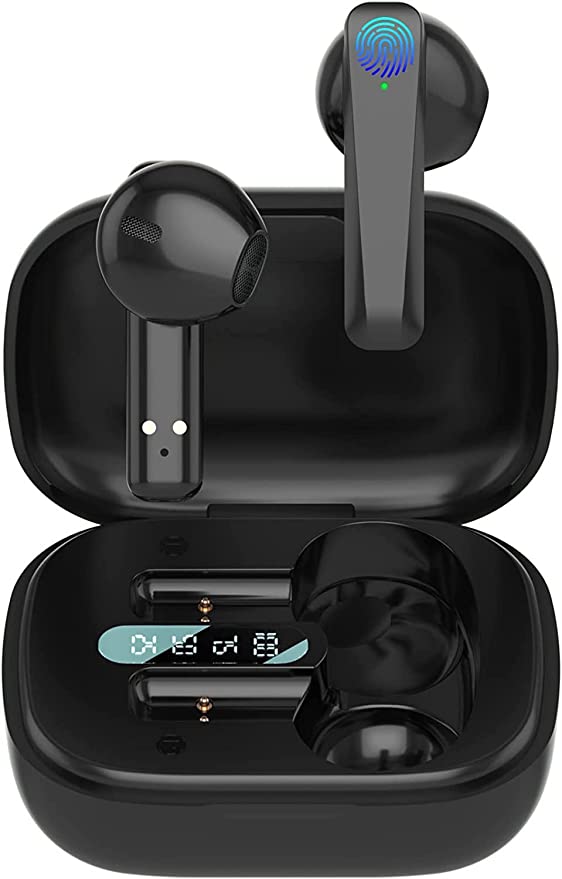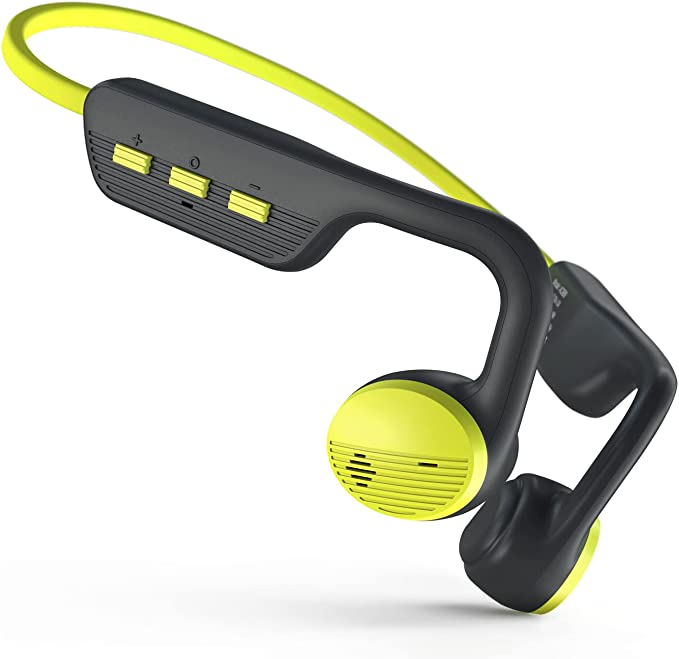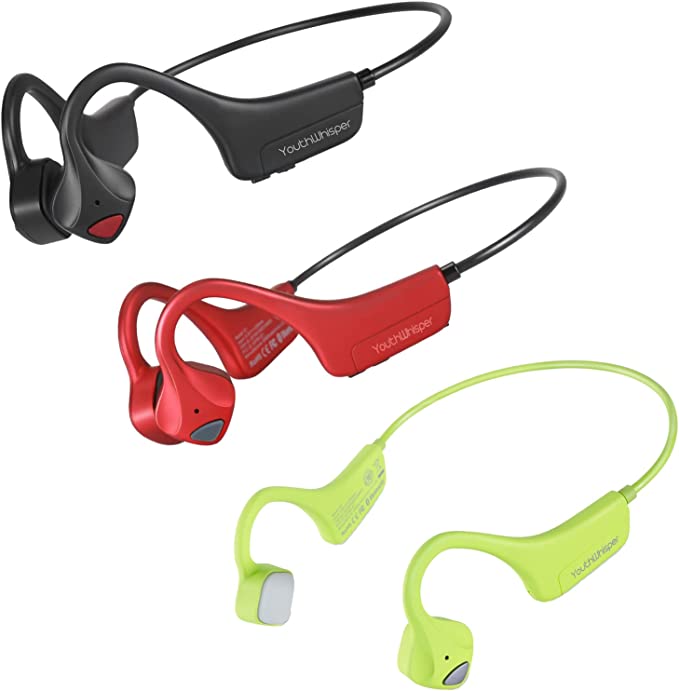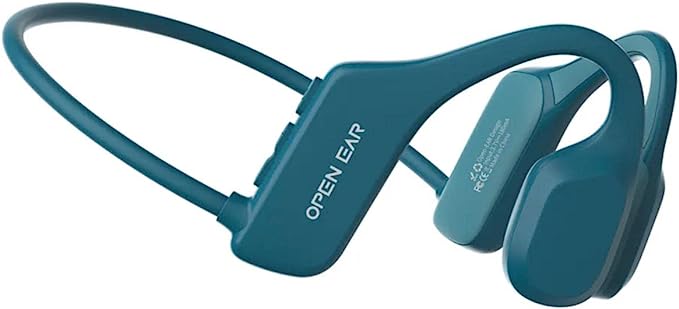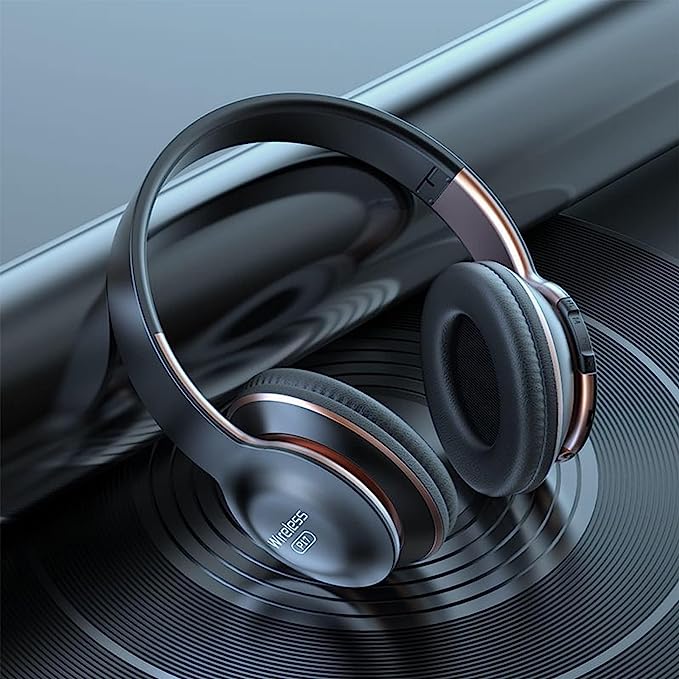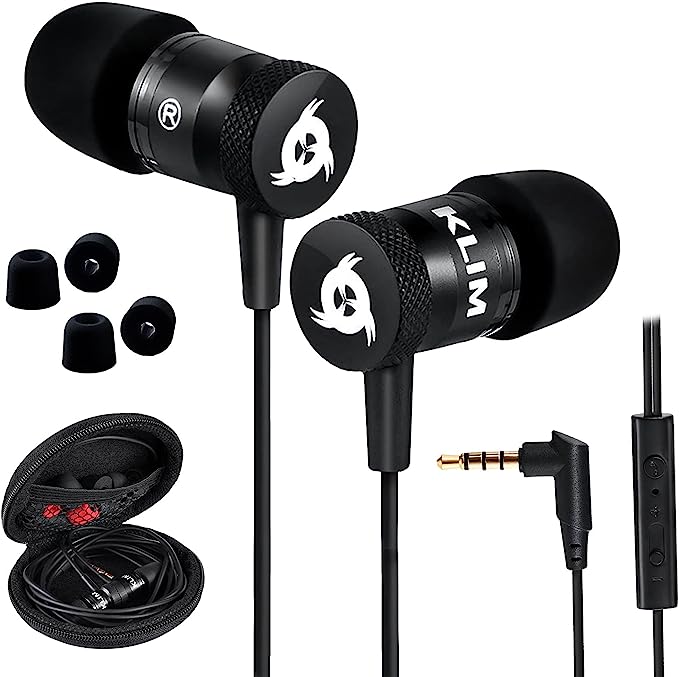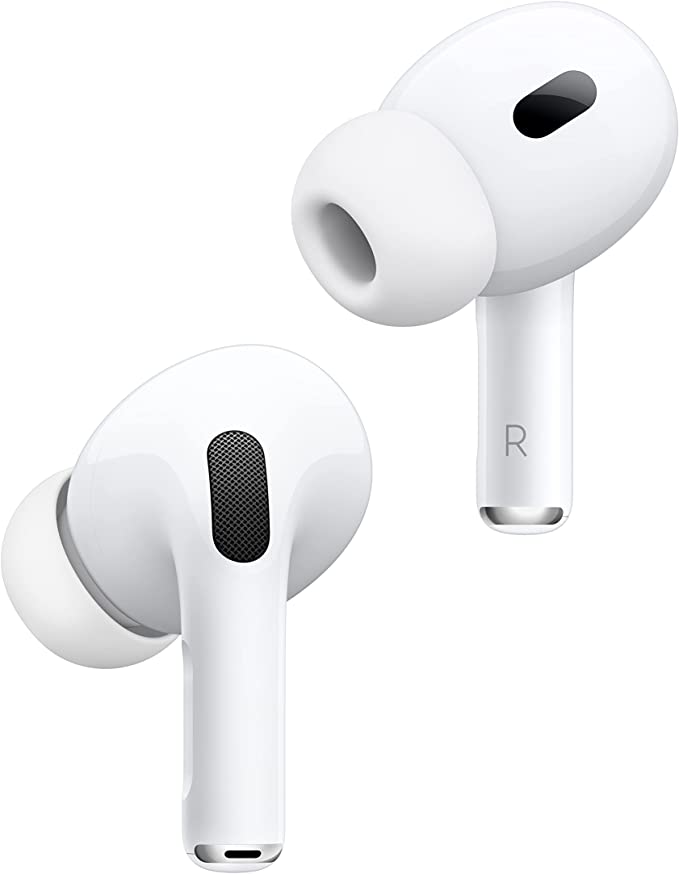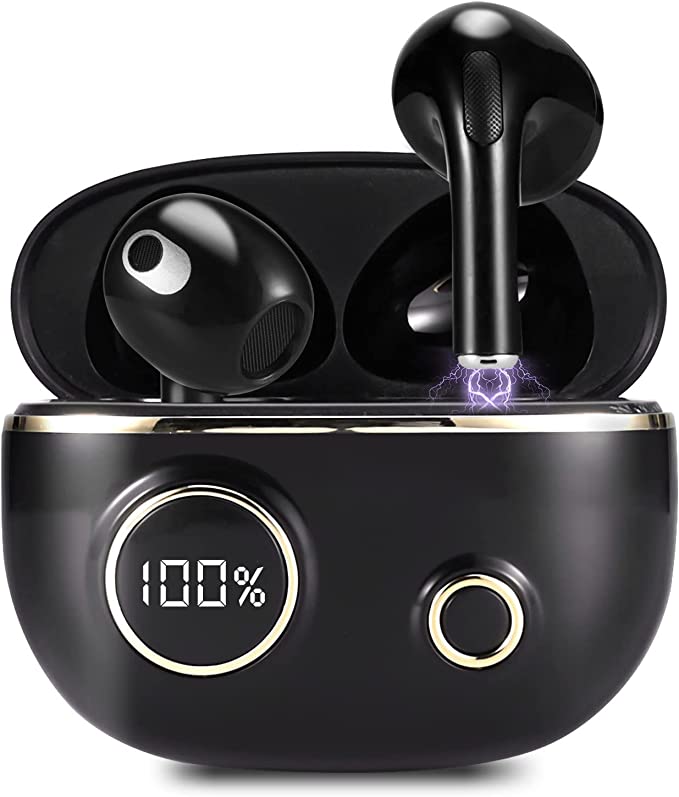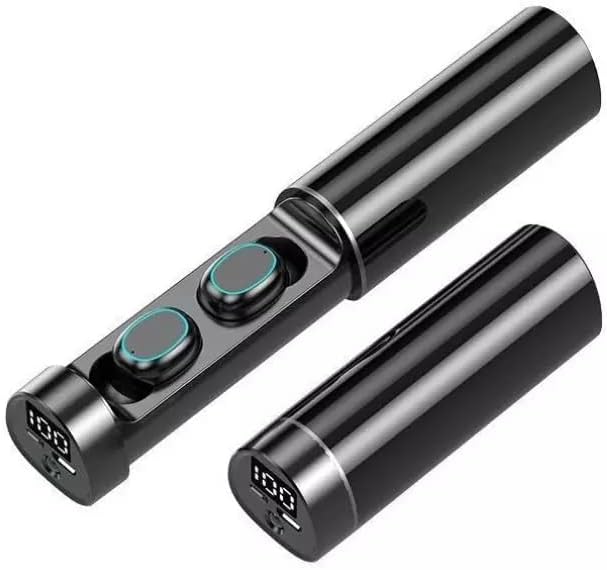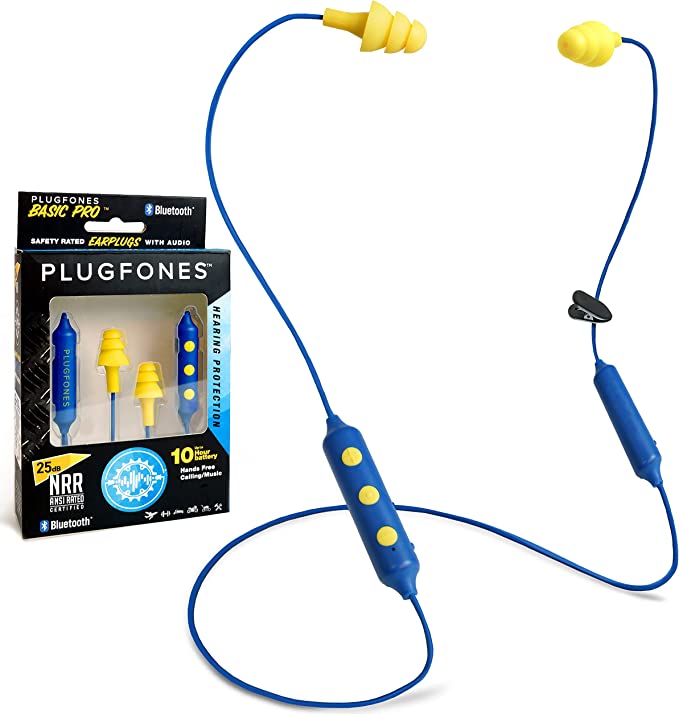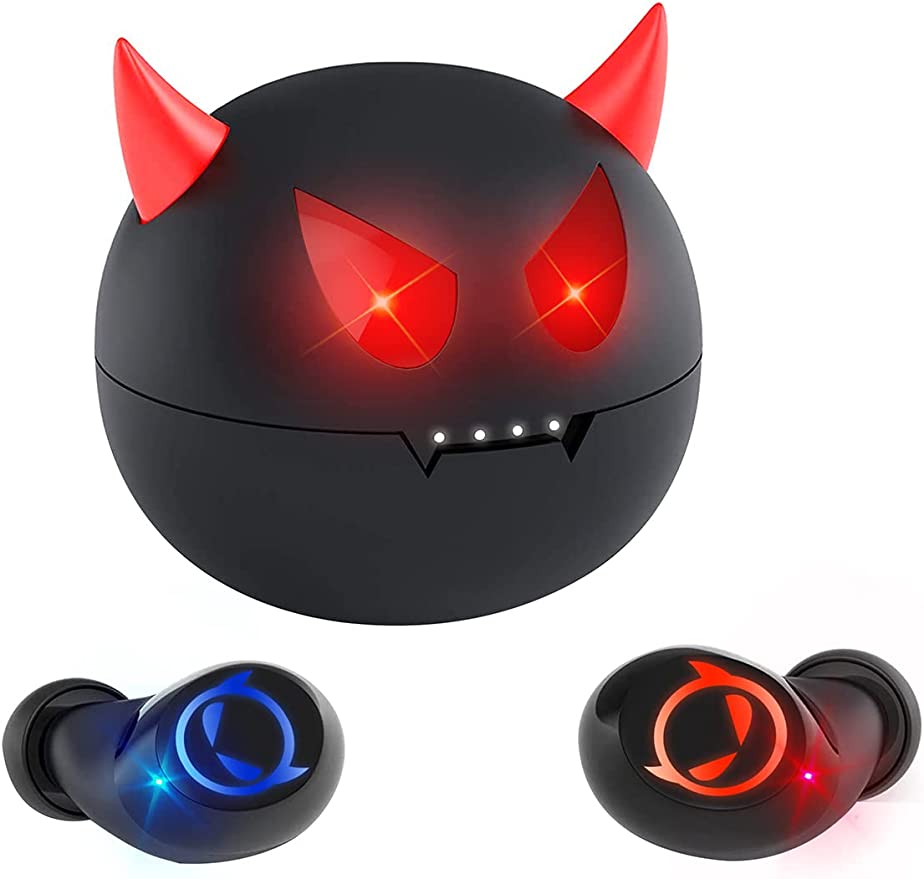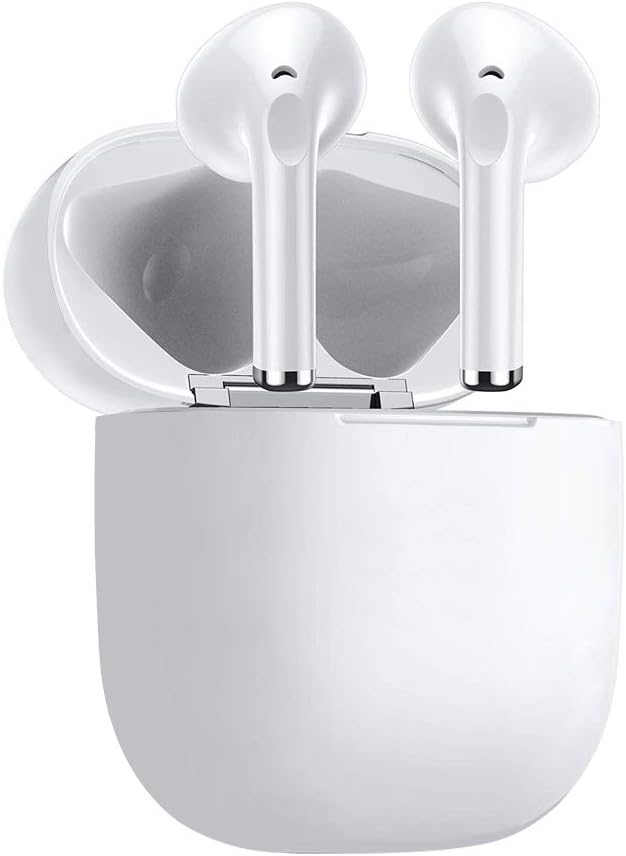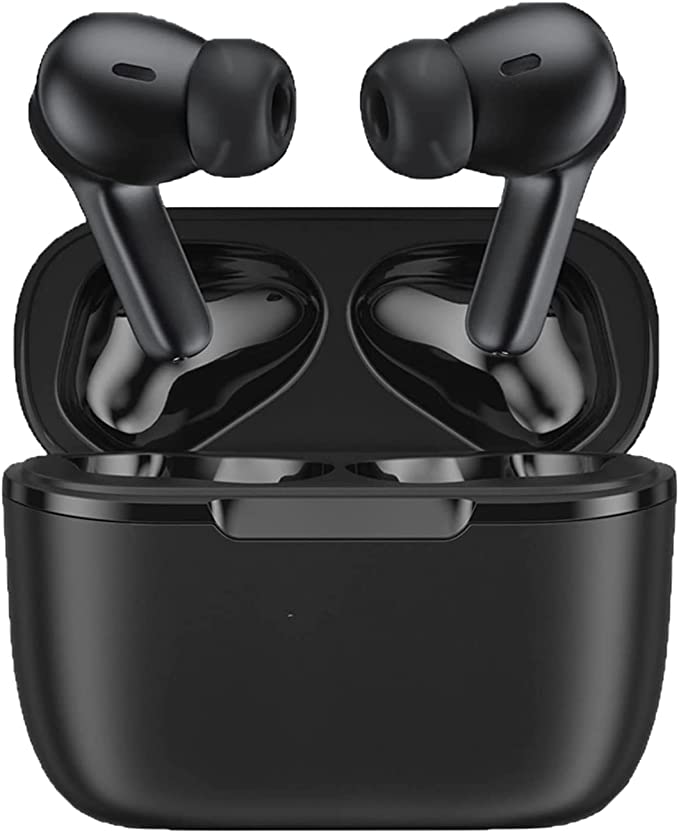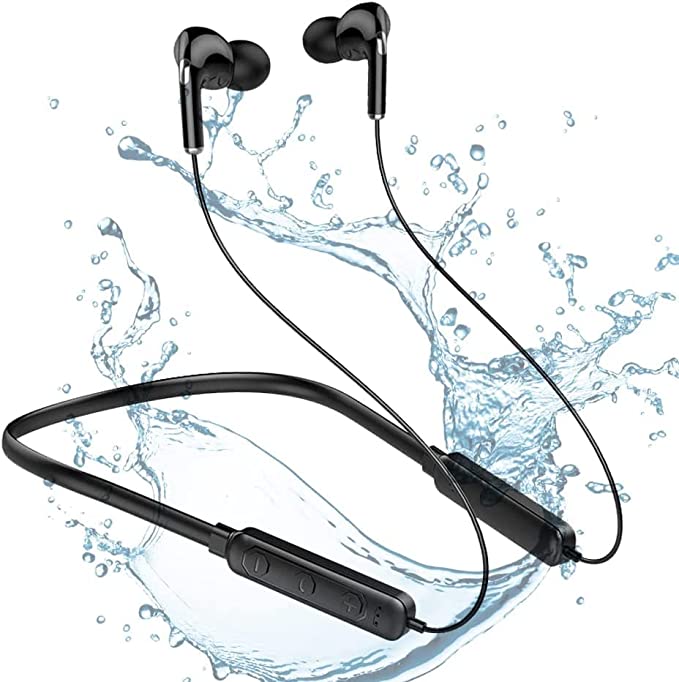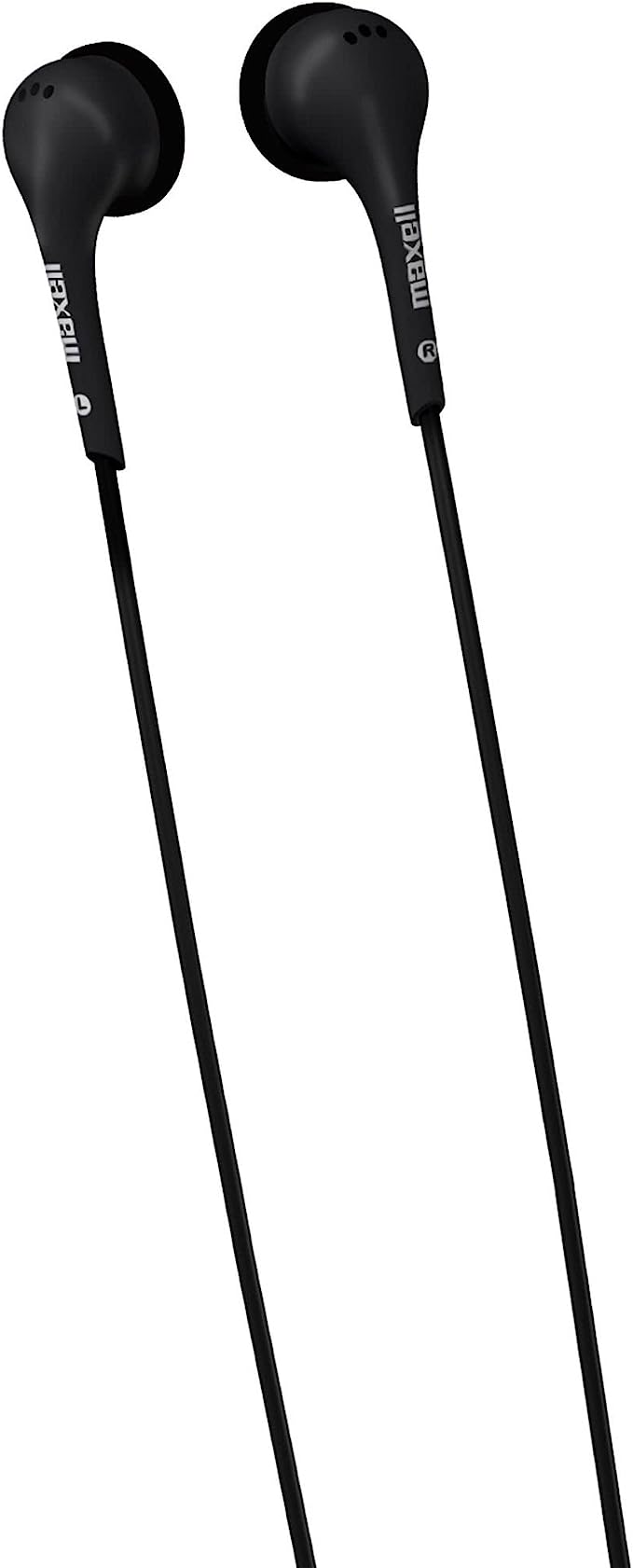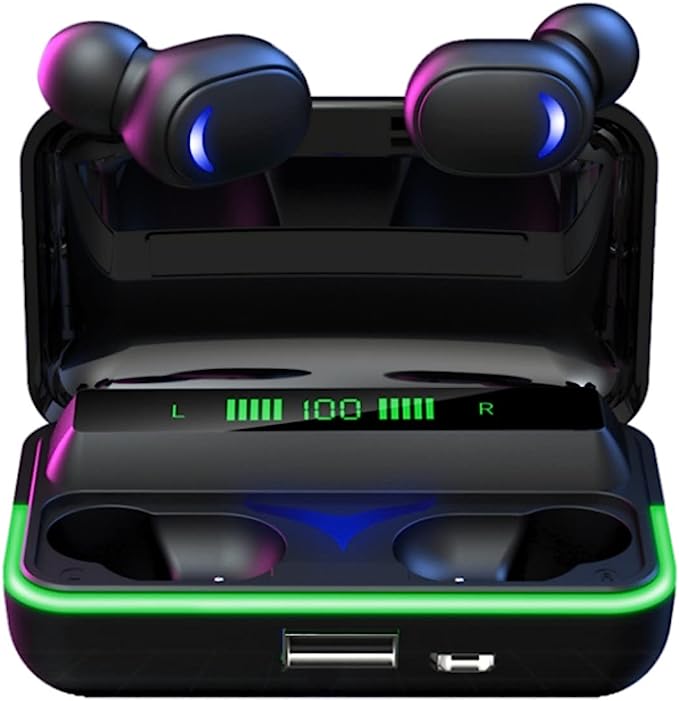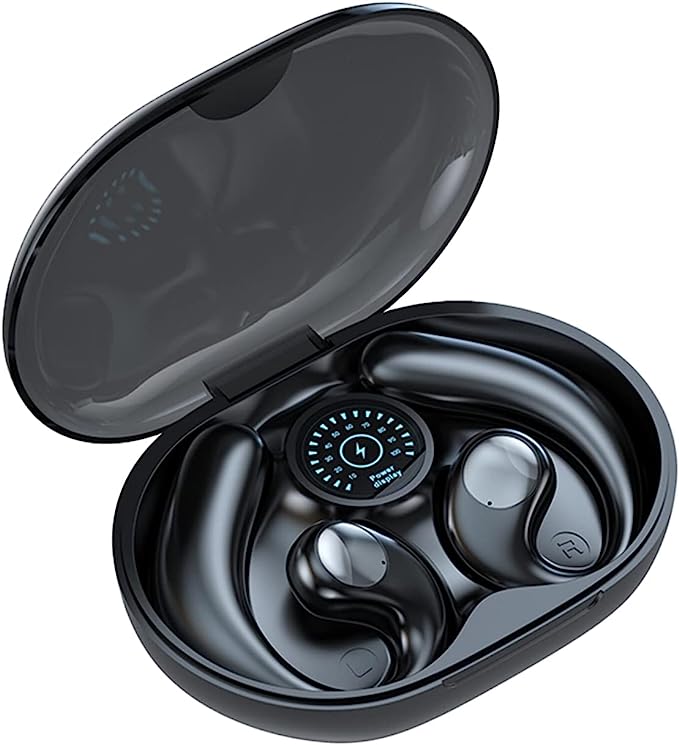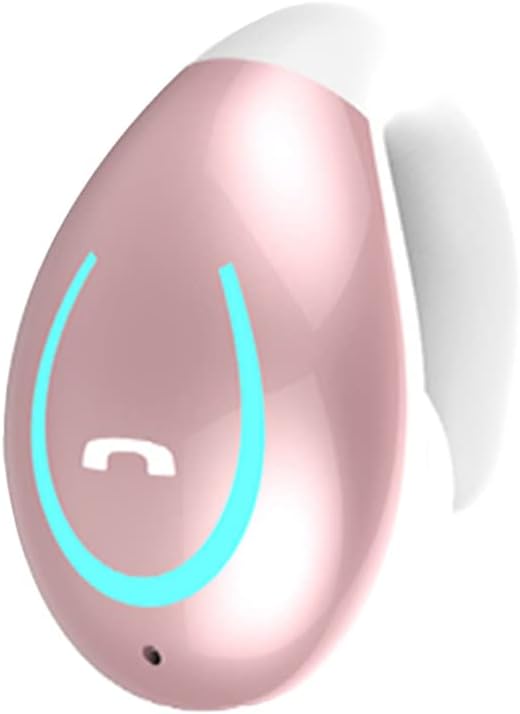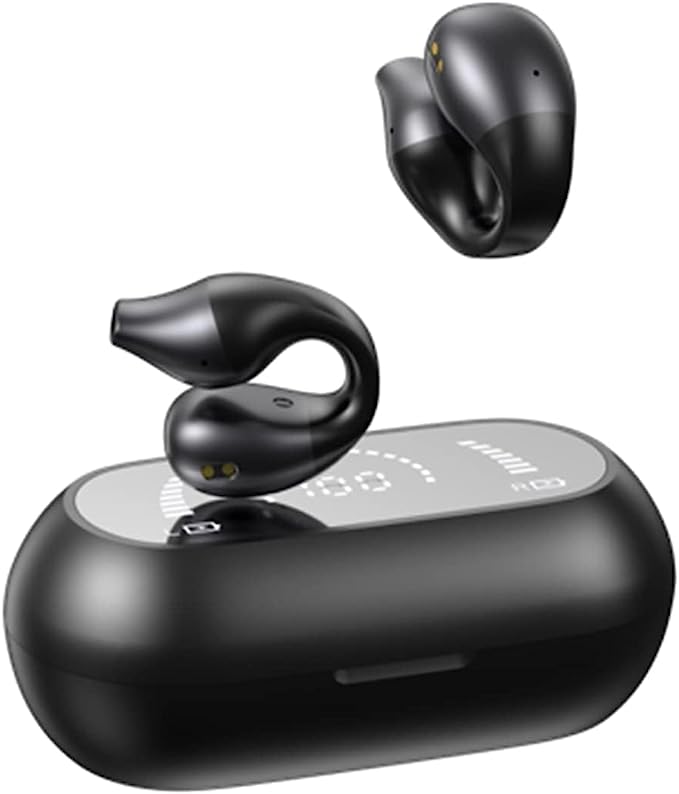Ertuly R15 Bone Conduction Bluetooth Earphones: Open-Ear Design for Comfort and Freedom
Update on May 29, 2025, 10:33 a.m.
The Unheard Symphony of Daily Life: Are Your Earbuds Tuning You Out?
Imagine this: you’re navigating a bustling city street, lost in your favorite podcast, a carefully curated sound bubble insulating you from the urban cacophony. Suddenly, a cyclist’s bell, unheard, zips perilously close. Or perhaps you’re at home, engrossed in an audiobook, and miss the subtle gurgle of an overflowing sink until it’s too late. These are common scenarios in a world where traditional earbuds and headphones, in their quest for immersive sound, often inadvertently disconnect us from the vital, an-d sometimes critical, symphony of our immediate surroundings. But what if there was a way to enjoy our personal soundscapes without completely silencing the world around us? This question is at the heart of the burgeoning field of open-ear audio, a technology that devices like the Ertuly R15 Open-Ear Earbuds aim to make more accessible.
This isn’t just about a new gadget; it’s about re-evaluating our relationship with sound and exploring technologies that promise a more integrated, aware, and potentially more comfortable listening experience. Let’s delve into the science, design, and real-world implications of such an approach, using the Ertuly R15 as our guide.

The Open-Ear Revolution: Hearing More Than Just the Music
The core idea behind open-ear audio is deceptively simple yet profound: to deliver sound to your ears without obstructing the ear canal. Think of it like opening a window to let in a breeze while still enjoying the music playing inside your room. Traditional in-ear buds create a seal, while over-ear headphones cup the entire ear. Both, to varying degrees, act as physical barriers to external sound.
The science behind the benefits of an open-ear design is multifaceted:
- Situational Awareness – A Lifesaver, Literally: Our auditory system is a magnificent 360-degree surveillance tool, constantly processing ambient sounds to help us navigate, react, and stay safe. By leaving the ear canal open, devices like the Ertuly R15 earbuds allow these environmental cues – traffic noise, conversations, warning signals – to reach the eardrum naturally. This isn’t just a convenience; for cyclists, runners, or even pedestrians, it’s a crucial safety feature. The ability to hear an approaching vehicle or a shout for attention can make all the difference. This principle aligns with basic acoustics: sound waves from our surroundings need an unimpeded path to our auditory system for us to perceive them effectively.
- Comfort Reimagined – Beyond the Pressure Point: Many find the prolonged pressure of in-ear buds or the bulk of over-ear headphones uncomfortable, leading to ear fatigue or even soreness. Open-ear designs, by their very nature, eliminate direct pressure inside the ear canal. This can be a game-changer for extended wear, whether you’re on long conference calls or binge-listening to a new album. The product description for the Ertuly R15 emphasizes this, claiming they “never really enter your ears,” thereby avoiding the “squeezing of the ear” or “blockage of the ear canal.”
- Ear Health – Letting Your Ears Breathe: Occluding the ear canal for extended periods can trap moisture and heat, potentially creating a breeding ground for bacteria and contributing to issues like swimmer’s ear or irritation. Open-ear designs promote better airflow, which can help keep the ear canal drier and healthier. As one Ertuly R15 user noted in the provided product information, the “open ear design helps keep air flowing to the ear canal preventing gunk build up and sores.”

“Bone Conduction” Unveiled: Decoding the Ertuly R15’s Sonic Signature
The term “bone conduction” frequently appears in the Ertuly R15’s branding – “Ertuly R15 Bone Conduction Earbuds,” “Wireless Ear Clip Bone Conduction Earbuds.” It’s a fascinating concept that deserves a closer look.
True bone conduction technology is a marvel of acoustic engineering. Instead of sending sound waves through the air into your ear canal to vibrate the eardrum, it uses transducers that rest against the bones of your skull (typically the cheekbones). These transducers generate micro-vibrations that travel directly through the bone to the cochlea, the inner ear’s auditory sensing organ, effectively bypassing the outer and middle ear. This technology has a rich history, initially explored for hearing aids and specialized communication systems, allowing individuals with certain types of conductive hearing loss to perceive sound. Think of it as a private, internal pathway for sound.
Now, let’s consider the Ertuly R15. The product description interestingly states, “no more uncomfortable bone vibration transmission.” This phrasing, coupled with its “open ear” emphasis and the ear-clip design, suggests that while the R15 might borrow the concept or terminology of bone conduction (perhaps to highlight its unoccluded nature), its primary sound delivery mechanism is likely a highly targeted form of air conduction. The sound is probably projected from the small speakers on the ear clips towards the ear canal opening, allowing the user to hear both the audio from the earbuds and ambient sounds.
This isn’t a deception, but rather a common marketing approach to associate a product with the desirable outcomes of a known technology – in this case, situational awareness and an ear-canal-free experience, which are hallmarks of true bone conduction devices. So, while you might not be experiencing sound waves traveling primarily through your jawbone with the R15, you are experiencing the auditory freedom its open-ear design facilitates. The aim, as the product states, is to “avoid the most common health problems of traditional sports headphones” by keeping the ear canal clear.

Journey Through the Ertuly R15: Where Design Meets Daily Life
Understanding the broader concepts of open-ear audio and “bone conduction” terminology sets the stage for a deeper exploration of the Ertuly R15’s specific features. How do its design choices and technological components translate into real-world user experiences, both the praised and the panned?
A Whisper-Light Embrace: The Ergonomics of Freedom
The Ertuly R15 is marketed as “mini light-weight,” with the earbuds themselves weighing a mere 12 grams (approximately 0.42 ounces) according to the product description. They employ an “ear clip” design, crafted from plastic with what appears to be flexible silicone ear hooks, intended to “perfectly fit the natural curve of your ears.”
From an ergonomic perspective – the science of designing for optimal human use and comfort – a lightweight design is crucial for wearable technology. Heavy earbuds can cause strain and discomfort over time, especially during activities involving movement, like running or cycling. The ear-clip mechanism aims to provide stability without inserting anything into the ear canal. For this type of design, the pressure distribution on the ear’s cartilage and the security of the clip are paramount.
User feedback from the provided source paints a mixed picture here. One reviewer found them to be a “Perfect fit!” and another, who self-identified as having small ears, praised them, saying, “works great if you have small ears like I do.” This user also appreciated that “since they don’t actually fit IN your ear canal they don’t rub.” However, another user with presumably larger ears found them less accommodating: “if you have larger ears they may not fit as comfortably.” And a different review stated, “They clipped on and were uncomfortable. The did not feel secure.” This highlights a common challenge in universal-fit ergonomic design: what works wonders for one ear shape and size might be problematic for another. The ideal ear-clip design would offer some adjustability or come in various sizes, though this is rare in budget-friendly models.

The Unseen Handshake: Navigating the Wireless World with Bluetooth 5.3
Connectivity is the lifeblood of wireless earbuds, and the Ertuly R15 features Bluetooth 5.3. In the realm of wireless standards, Bluetooth 5.3, as defined by the Bluetooth Special Interest Group (SIG), offers several general enhancements over older versions. These can include improved connection reliability, lower energy consumption (benefiting battery life), and better handling of channel classification to reduce interference. Some iterations of Bluetooth 5.3 also support LE Audio, which promises features like Auracast™ broadcast audio, though it’s not specified if the R15 implements these specific advanced LE Audio features.
The product description claims “stable connectivity” and “wide compatibility.” However, this is one of the most contentious areas in the provided user reviews. While one user mentioned they “easily paired,” several others reported significant issues. One described it as “Trash product. Disconnects with phone constantly. Shuts off for no reason.” Another stated, “randomly activate functions, disconnect from my device.”
Such starkly contrasting experiences with Bluetooth connectivity are common in the wireless headphone market, especially at more accessible price points. Several factors beyond the Bluetooth version itself can influence stability: the quality of the antenna design within the earbuds, the paired device’s Bluetooth chipset and software, environmental an-d physical obstructions (like the human body or dense walls), and interference from other 2.4 GHz devices (like Wi-Fi routers or microwaves). While Bluetooth 5.3 provides a robust foundation, the overall implementation and component quality play a huge role in the end-user experience.
Crafting Your Soundscape: The “Independent Amplifier” and Open-Ear Audio
The Ertuly R15 boasts an “independent headphone amplifier driving powerful sound field.” An amplifier’s role in any audio system is to boost the electrical audio signal to a level sufficient to drive the speakers (or, in this case, the earbuds’ transducers) to produce sound at the desired volume and clarity.
In an open-ear design, achieving a “powerful sound field” without sound leakage or a perceived lack of bass can be a significant acoustic challenge. Unlike sealed in-ear monitors that deliver sound directly into the ear canal, open-ear designs must project sound effectively towards the ear from a slight distance, while also contending with ambient noise. An “independent amplifier” might be included to provide enough power to the transducers to overcome some of these challenges, aiming for what the product calls “pure balanced audio and clarity output.”
User perception of the R15’s sound quality, according to the provided reviews, is varied. Some found the sound “clear.” However, others were less impressed: “if you have larger ears they may not fit as comfortably,” “not noise cancelling and therefore sometimes aren’t as loud and the bass isn’t as intense as with in-ear ones,” and one user reported, “I could barely get any volume to hear.” This variability is typical for open-ear designs. The lack of a seal inherently means bass frequencies, which rely on trapped air pressure for their full impact, can sound less pronounced compared to in-ear models. Furthermore, in noisy environments, the perceived volume of the music will naturally be lower as it competes with unattenuated ambient sounds – a direct trade-off for situational awareness. The masking effect, a psychoacoustic phenomenon where the perception of one sound is affected by the presence of another sound, plays a significant role here.
Braving the Elements: The Science Behind Water Resistance
For earbuds aimed at sports, running, and workouts, resistance to moisture is non-negotiable. The Ertuly R15 claims a “dual waterproof design with structural waterproof and nanotechnology,” making them “sweat, splash, and rain resistant.”
Waterproofing in electronics is typically achieved through a combination of methods. “Structural waterproof” might refer to tight seals around casing joins, buttons, and charging ports (though the R15 uses a case for charging, the buds themselves need protection). Nanotechnology often involves applying an ultra-thin, hydrophobic (water-repelling) coating to the internal components or external surfaces. This coating works at a molecular level to prevent water droplets from adhering or penetrating. While the product doesn’t specify an IP (Ingress Protection) rating – an industry standard like IPX4 or IPX7 that quantifies resistance to water and dust – the descriptive terms suggest a design intended to withstand the typical moisture encountered during exercise. This is crucial for device longevity, as sweat contains salts that can be corrosive to electronic components over time.
The Reassuring Click: Why Physical Buttons Still Matter
In an age of sleek touch controls, the Ertuly R15 highlights its “newly upgraded physical button controls.” The choice between physical buttons and touch controls is a significant one in user interface (UI) and user experience (UX) design for wearables.
Physical buttons offer distinct tactile feedback – you can feel the click, confirming an action. This can be particularly advantageous during activities where your attention is divided or your hands might be sweaty or gloved, making precise touch gestures difficult. They can also reduce accidental activations. The product description claims these buttons help “accurately control the ear clip wireless earbuds, such as music on/off, volume control, answering calls and more.”
However, the user reviews present a slightly confusing picture. One review from May 9, 2023, mentions, “the pause/play touch button is on the backside of the ear and is very sensitive.” Yet, another review from April 22, 2023 (potentially referring to the same or an earlier iteration), states, “The controls on the buds are far too sensitive and randomly activate functions… I’m looking for a different pair due to the control issues.” The product description’s mention of “newly upgraded physical button controls” might imply an improvement over a previous version that perhaps did have overly sensitive touch controls, or that the current model primarily uses physical buttons. If physical buttons are indeed the primary interface, they should theoretically offer more reliable control, though their placement and actuation force are also key ergonomic factors. Poorly designed physical buttons can be just as frustrating as finicky touch controls.
Powering Your Adventures: Battery Life and the Convenience of the LED Case
The Ertuly R15 promises “up to 4 hours of continuous playback or 4 hours of continuous talk per charge,” with the accompanying charging case extending the total playback time to 16 hours. The case itself is said to recharge in 1 hour and features an LED display that shows the battery percentage of the case and the power status of each earbud.
A 4-hour playback time for the earbuds themselves is fairly standard for this type of lightweight, true wireless earbud, especially in the budget category. Lithium-ion batteries, the common power source for such devices, have a finite energy density. The actual playback time can vary significantly based on factors such as listening volume (higher volumes consume more power), the type of audio content, and even the ambient temperature. The charging case acts as a portable power bank, allowing multiple recharges on the go. The LED display is a genuinely useful feature, taking the guesswork out of knowing when to recharge the case or the earbuds.
User experiences with battery life were generally positive in the limited feedback provided. One reviewer noted, “battery life is great so far.” However, another encountered a critical failure: “Stopped charging on me.” This again points to potential quality control variability, a common concern with electronics at lower price points. Regular charging cycles and avoiding extreme temperatures can help prolong the general lifespan of lithium-ion batteries.
Beyond the Music: Open-Ear Listening and Your Auditory Wellbeing
The conversation around open-ear audio often extends to the realm of hearing health. By not creating a tight seal and high sound pressure levels directly within the ear canal, open-ear designs may offer some advantages, provided listening volumes are kept sensible. The World Health Organization (WHO) and other audiological bodies consistently warn about the risks of noise-induced hearing loss from prolonged exposure to loud sounds, recommending listening at lower volumes for shorter durations. Open-ear headphones, by allowing ambient sound in, might naturally encourage users to listen at lower volumes compared to when trying to overcome external noise with sealed earbuds.
The Ertuly R15 product description claims, “Research has shown that using open-ear earbuds and reducing the volume are effective measures to protect against hearing loss.” It also suggests they are “Perfect for Children,” as they “protect children’s ears from hearing development and keep the ear canal clean.” While maintaining ear canal hygiene by avoiding blockage is a clear benefit, the claim regarding “hearing development protection” should be approached with caution. The most critical factor for protecting any child’s hearing (or an adult’s) is to ensure safe listening volumes and limited exposure times, regardless of the headphone type. An open design doesn’t inherently make loud music safe.
Furthermore, the ability to remain aware of one’s surroundings is not just a physical safety benefit but also a cognitive one. Our brains are wired to process a rich tapestry of auditory information. Constant auditory isolation can, for some, feel unnatural or even increase feelings of stress in certain environments. Open-ear listening can foster a more natural and less taxing auditory experience.
The Ertuly R15 Experience: Balancing Innovation with Everyday Practicality
The Ertuly R15 earbuds, priced at around $23.99 (according to the provided data at the time of its listing), position themselves as an accessible entry point into the world of open-ear audio. They promise a listening experience that prioritizes comfort (for some ear shapes), situational awareness, and a departure from the occlusive nature of traditional earbuds. The underlying science of open-ear acoustics supports these potential benefits.
However, the journey from concept to a consistently positive user experience is fraught with challenges, especially in a competitive, budget-conscious market segment. The user-reported issues with Bluetooth connectivity and control sensitivity for the R15 are significant and cannot be ignored. These are fundamental aspects of usability that can make or break the everyday experience with any wireless audio device. While the open-ear design and lightweight nature are appealing, if the earbuds frequently disconnect or trigger unwanted actions, their core purpose is undermined.
For the discerning listener or a tech enthusiast curious about open-ear technology without a hefty investment, the Ertuly R15 might offer a glimpse into its potential. But it’s a glimpse that, based on the available user feedback, may come with a notable asterisk regarding reliability and control.

Conclusion: Tuning Into a More Connected World
The evolution of personal audio is a fascinating journey, moving from simple sound reproduction to increasingly sophisticated wearable technology that interacts with our senses and our environment. The Ertuly R15, with its open-ear design, represents a strand of this evolution – one that seeks to integrate our digital audio lives more seamlessly and safely with the physical world around us.
The principles behind open-ear listening are sound: enhanced awareness, potential for greater comfort, and a nod towards healthier listening habits. However, the success of any individual product lies in its execution. While the Ertuly R15 champions these ideals, the path to a universally acclaimed user experience appears to require further refinement, particularly in core functionalities like wireless stability and user control.
Ultimately, the choice of personal audio gear is deeply personal, hinging on individual priorities – be it absolute sound fidelity, an unshakeable connection, featherlight comfort, or the non-negotiable ability to hear the world’s vital cues. As technology continues to advance, the quest for that perfect balance will undoubtedly bring even more innovative ways to tune in, without entirely tuning out.
